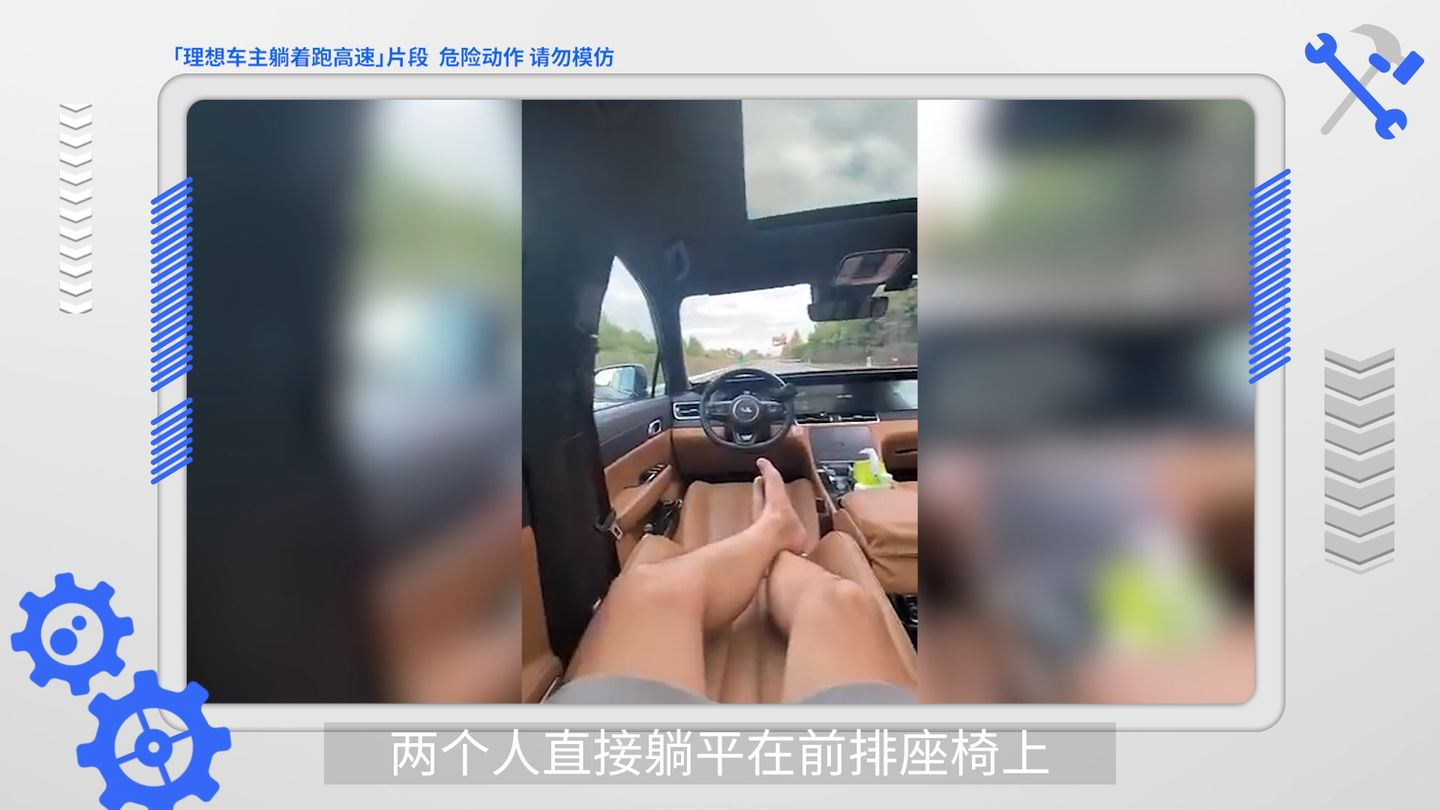Believe that friends who are concerned about assisted driving have recently seen the video of Ideal ONE car owners showing off their fancy use of assisted driving on social media.
First of all, I want to emphasize to everyone that this is an extremely dangerous way of using the system, because at the current stage, the assisted driving of Ideal ONE requires the driver to take over at any time and be on standby at all times. In order to help everyone understand the boundaries of the assisted driving system of Ideal ONE, I have conducted an exploration together with the disassembly laboratory of Zhihu.
There are two types of sensors responsible for participating in the assisted driving function on the 2021 model of Ideal ONE, namely cameras and millimeter-wave radar.
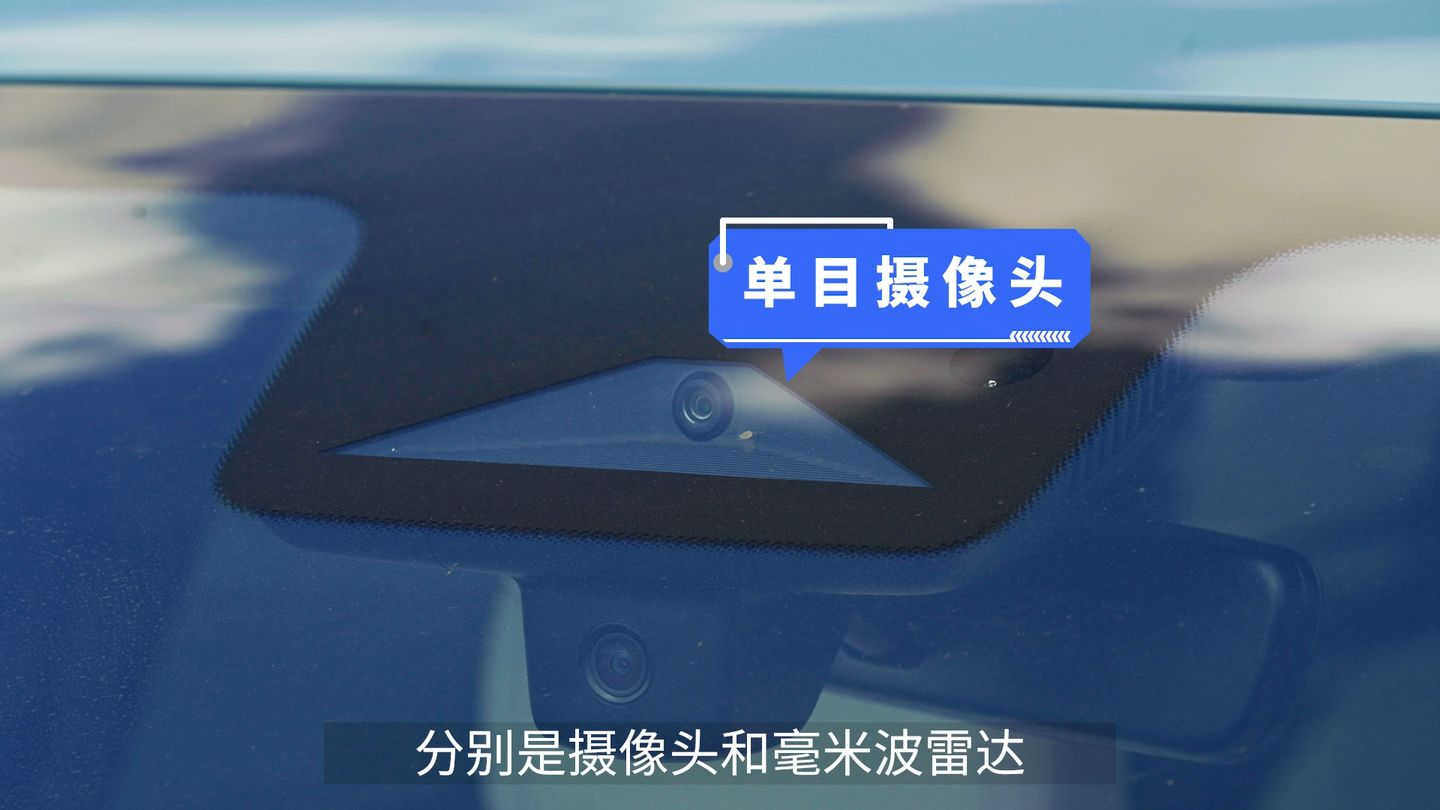
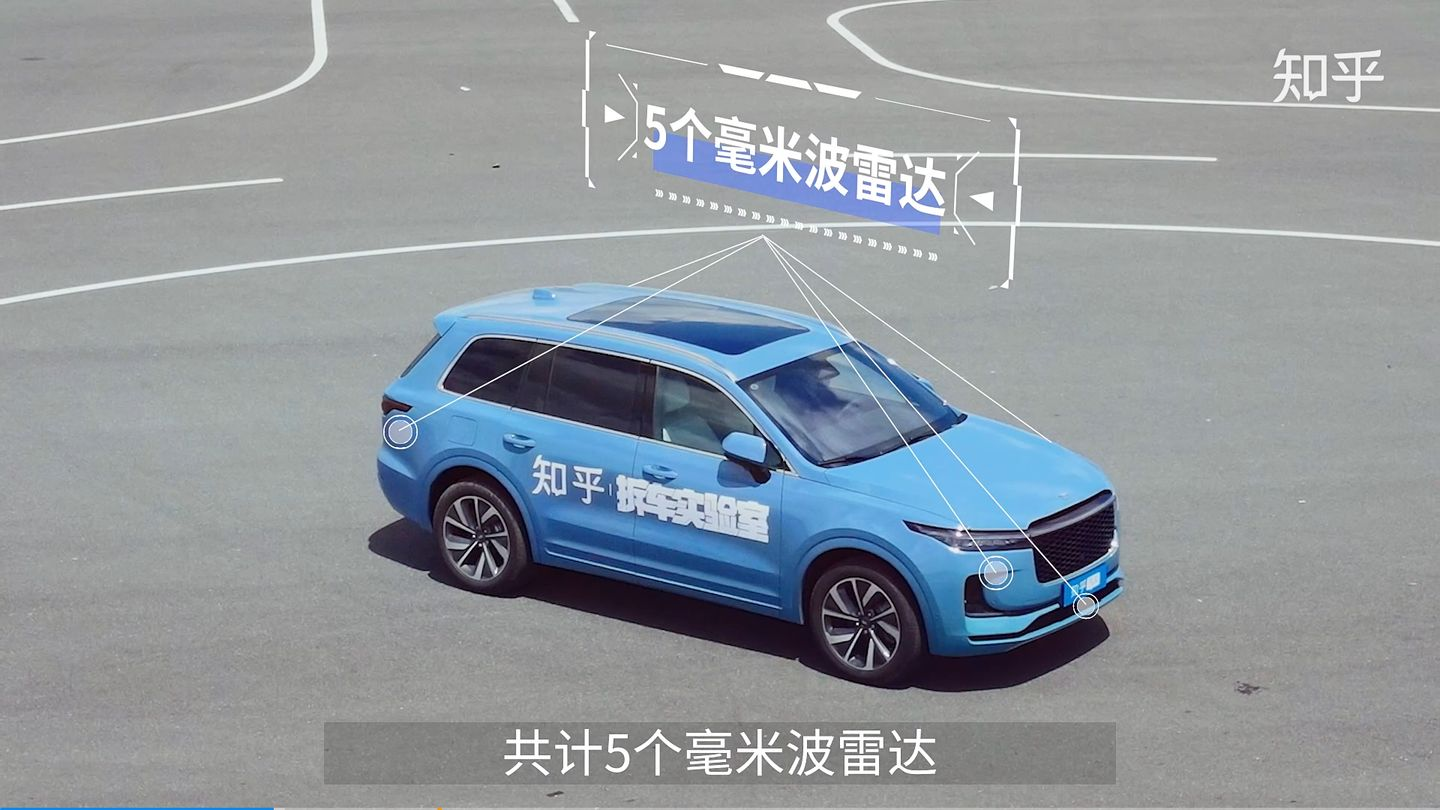
If we make an analogy between assisted driving function and human beings, the camera installed under the windshield is like our human eyes, which can identify lane lines, obstacles, and various traffic signs, etc.; The five millimeter-wave radars, installed in front of the vehicle and on its four corners, are like human ears that can help the assisted driving system “hear” obstacles beyond the camera’s field of view, thereby further ensuring driving safety.
Human drivers think based on the information they see and hear while driving, and then control the vehicle’s direction by using their hands, feet and other equipment through the brain. The assisted driving system also has similar logic. After it “sees” and “hears” various traffic information, the central controller of Ideal ONE, which is the brain of the assisted driving system, uniformly processes this information, and calculates the steering angle, as well as the opening degree of the brake or accelerator pedal, and sends these information to the chassis, which are the hands and feet of Ideal ONE, to achieve control.
Compared with the 2020 model, the 2021 model of Ideal ONE has two major upgrades in sensors.First of all, the “eyes” of the Ideal ONE’s advanced driver assistance system consist of two parts: a camera and a visual perception chip for processing image information. For the 2020 model, the “eyes” were provided by the world’s leading visual perception supplier, Mobileye, with a 130 million pixel camera and a 52° field of view, and a visual perception chip with a computational power of 2.5 TOPS. For the 2021 model, the “eyes” were upgraded with leading domestic vision supplier Horizon’s camera with 800 million pixels and a 120° field of view, and image processing power provided by two Horizon 3 chips with a highest computational power of 10 TOPS. The upgrades in pixel and field of view can help reduce close-range blind spots, increase lateral detection range, and effectively improve recognition capabilities for ramps and large curvature bends.
Secondly, the “ears” of the Ideal ONE were upgraded from a single millimeter wave radar facing forward for the 2020 model to millimeter wave radars installed on the front and four corners of the car for the 2021 model, with a detection angle of 150° and a maximum detection distance of 110 meters. The added millimeter wave radars can improve the perception ability in sideways and backward directions during high-speed cruising, allowing the Ideal ONE to monitor incoming traffic from behind in real time during active lane-changing, thus achieving assisted navigation driving.
As a side note, as the first vehicle manufacturer to use the Horizon 3 chip, why did Ideal ONE abandon the top-notch international technology provider Mobileye and turn to domestic chips instead? From my perspective, there are several reasons. First, Mobileye EyeQ4, the chip released in 2018, clearly limits the upper limit of the Ideal ONE’s ADAS capabilities for computational power and visual perception performance. Secondly, I worked with Mobileye people in 2017 when I was working in a certain automaker. Their visual algorithms are designed according to the road conditions of the US, Japan, and Israel, which may cause some incompatibility issues in China. When giving feedback or reporting issues to them, the time it took to communicate was prolonged and the collaboration was lackluster. The iteration speed was too slow to keep up with the pace of software iteration for China’s intelligent vehicles. Domestic manufacturers like Horizon can provide visual perception capabilities that are not only more suitable for China’s road conditions but also ensure sufficient speed of iteration.
So, after all these hardware upgrades for the 2021 model of Ideal ONE, how does its ADAS performance actually perform?I conducted a round of testing with the Zhiche Auto’s research lab on the Automatic Emergency Braking (AEB) and Advanced Driver Assistance Systems of the Ideal ONE, based on the features released in Q2.
Before the testing, we need to clarify the difference between AEB and ADAS.
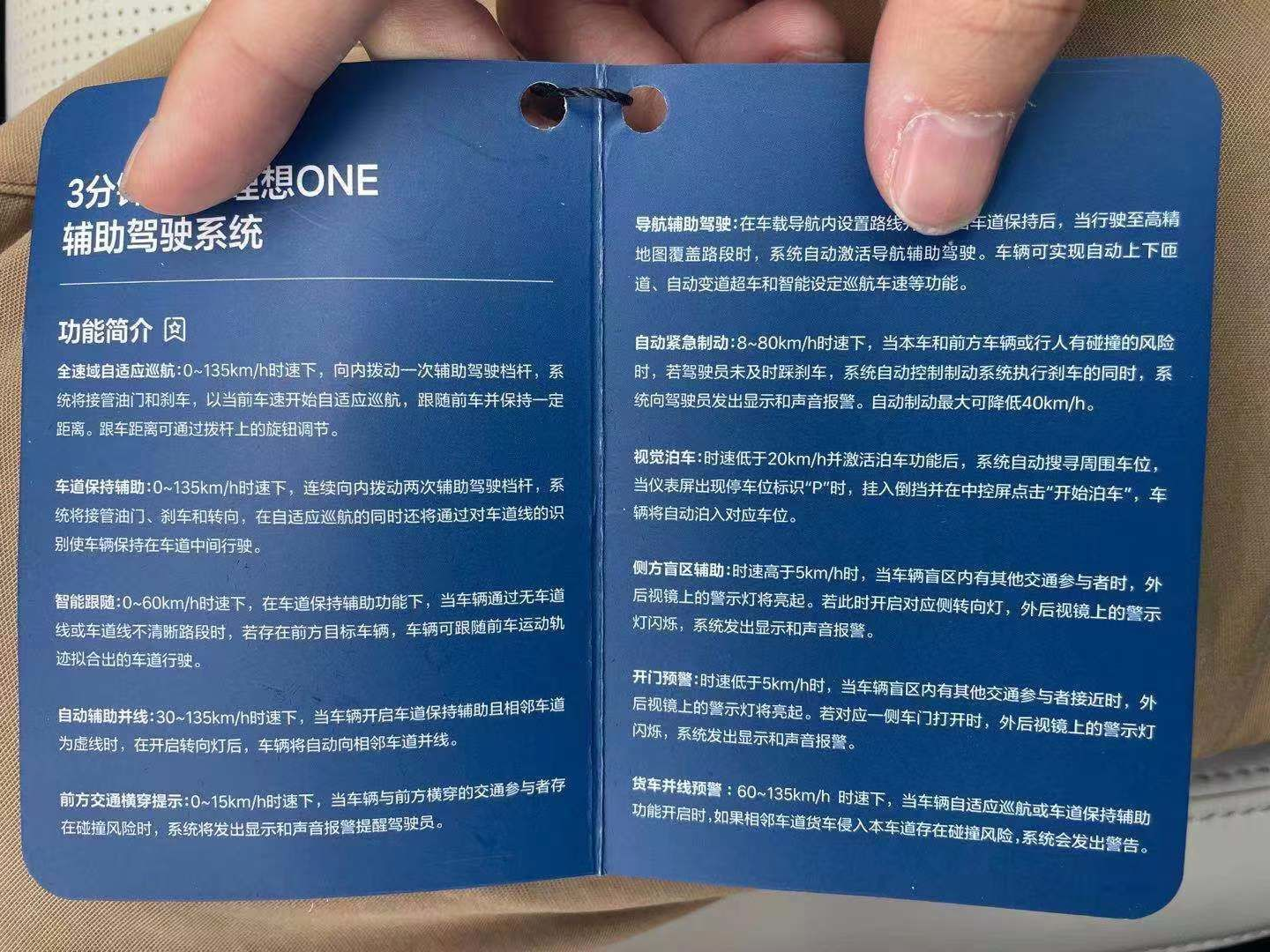
Automatic Emergency Braking (AEB), according to Zhiche Auto’s official description, is activated when a risk of collision with a front vehicle or pedestrian is detected at a speed between 8-80 km/h. If the driver fails to apply the brake in time, the system automatically applies the brakes and sounds an alarm to alert the driver in real-time. The system’s automatic braking can reduce speed by up to 40 km/h. The system is always in an active state, and if a risk of collision is detected, it will initiate full braking. The system has a high priority in controlling the vehicle, and the driver cannot accelerate the vehicle even if they press the accelerator when AEB is triggered.
The Advanced Driver Assistance System (ADAS) is a driving system with adaptive cruise control, automatic lane guidance, acceleration, and braking functions. To activate the autonomous driving system, the driver needs to actively trigger it by pulling the lever twice. After that, the steering wheel and the brake and accelerator pedals will be controlled by the AD system, and the driver can take back control at any time.
In order to understand the performance boundaries of Ideal ONE’s AEB and ADAS, we designed various scenarios for testing.
AEB Testing with Dummy Pedestrians
We first designed scenarios using dummy pedestrians, including static adult and child dummy pedestrians as well as dummy pedestrians crossing the road.
The testing process did not go smoothly, as according to previous research results and our expected results, we thought that Ideal ONE should be able to stop smoothly at low speeds but may have difficulty stopping at high speeds. However, the results were unexpected. We observed that when facing stationary dummies or pedestrian crossing, the test results displayed stably on the central screen, but there were neither alarms nor braking actions during the entire collision process, which was completely different from what the card described.
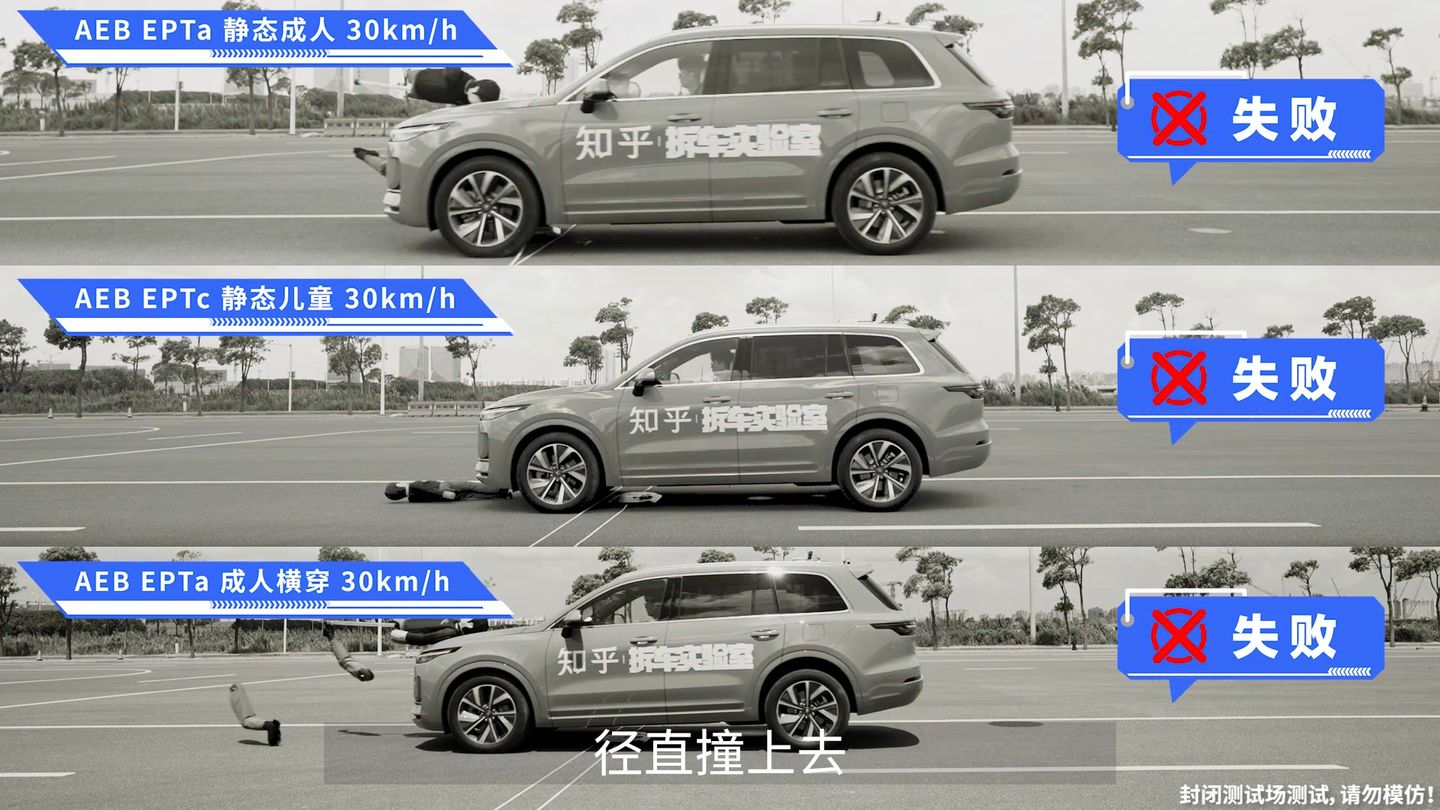 Translated Markdown text with HTML tags preserved:
Translated Markdown text with HTML tags preserved:
During the testing process, we once suspected whether the AEB was turned off, or the software version was incorrect, or even if the ADAS of our car was malfunctioning and causing the AEB to fail. However, after multiple on-site confirmations and communicating with the customer service of Li Auto, we are very sure that there are no problems with our car, software version, and operating method. So where is the problem?
To confirm whether Li Auto’s ADAS can really react to a fake human, we immediately tested its ADAS function in the same scenario.
The test results showed that with ADAS turned on, for static adult dummies, the maximum stable braking speed of the cruising car is 65 km/h, and the maximum stable braking speed is 40 km/h when the adult dummy crosses the road.
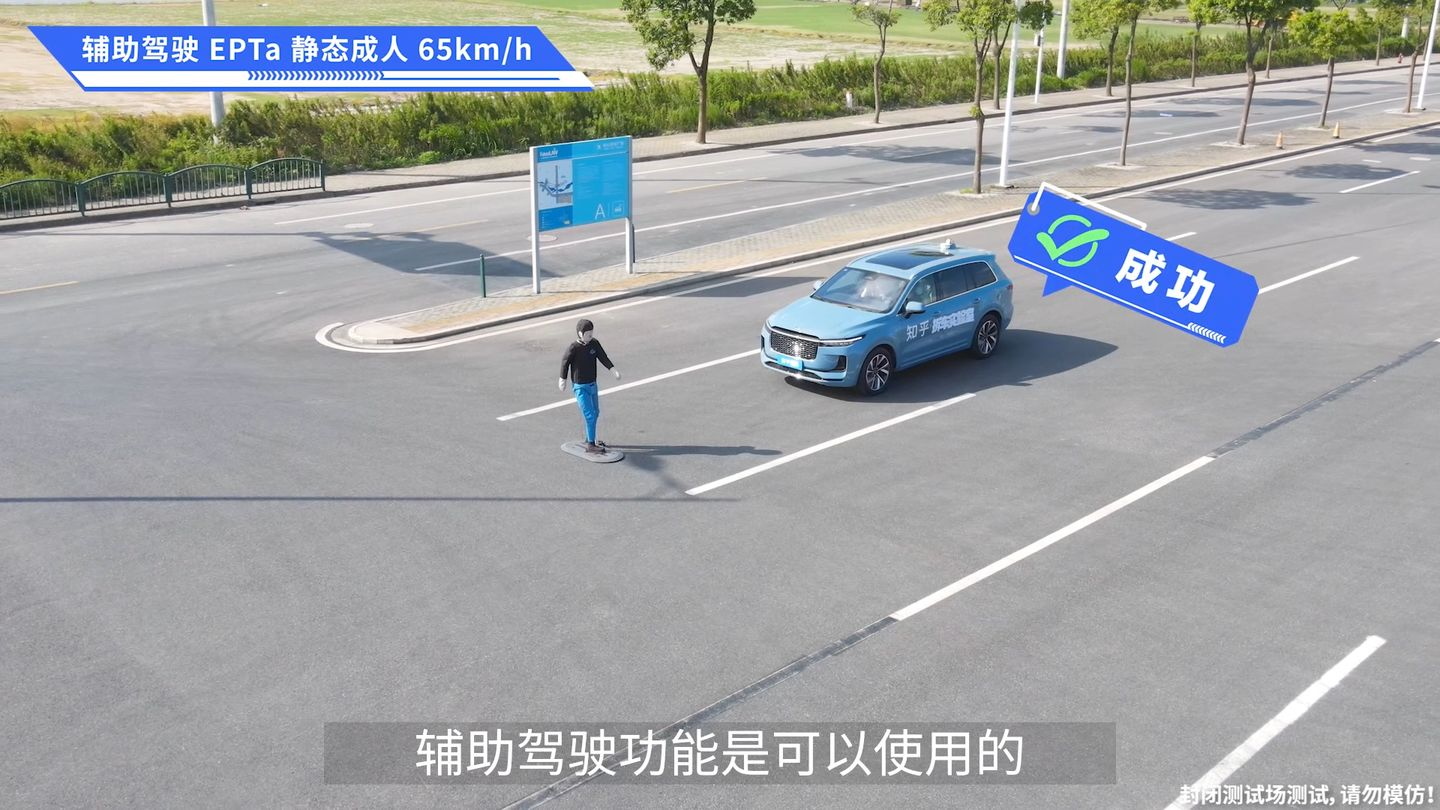
Conclusion of the fake human AEB test
From the phenomenon that Li Auto’s ADAS can stably apply brake to the fake humans during cruising, it can be seen that Li Auto’s ADAS system can stably recognize the fake humans, which is consistent with the information we saw on the central control screen during the test. This indicates that with the new “eyes,” Li Auto’s ADAS can see the fake human, but the AEB function ignores pedestrians completely. Through these tests, it can be seen that Li Auto’s AEB function for pedestrians is far from the official capabilities advertised.
Fake car AEB testing process
After testing the fake human, we conducted AEB and ADAS tests on the fake car.
We first did the most common static fake car 100% head-on collision. Through collision tests from 5 km/h to 80 km/h, we found that the central control screen of Li Auto could stably display the fake car, and the AEB braking could be stabilized at speeds below 60 km/h, but when the speed was at or above 60 km/h, Li Auto’s AEB performance was not ideal, and it failed to brake.
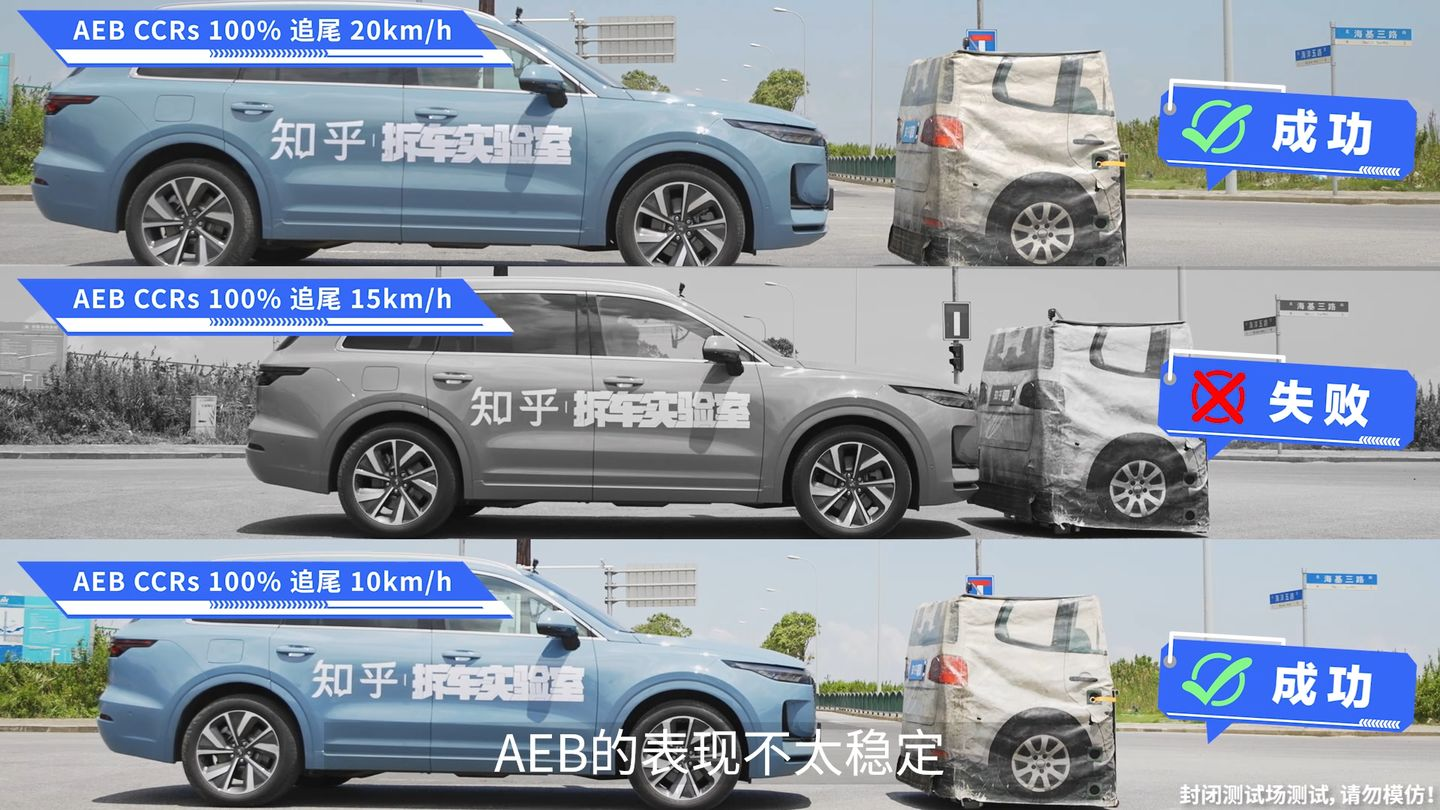
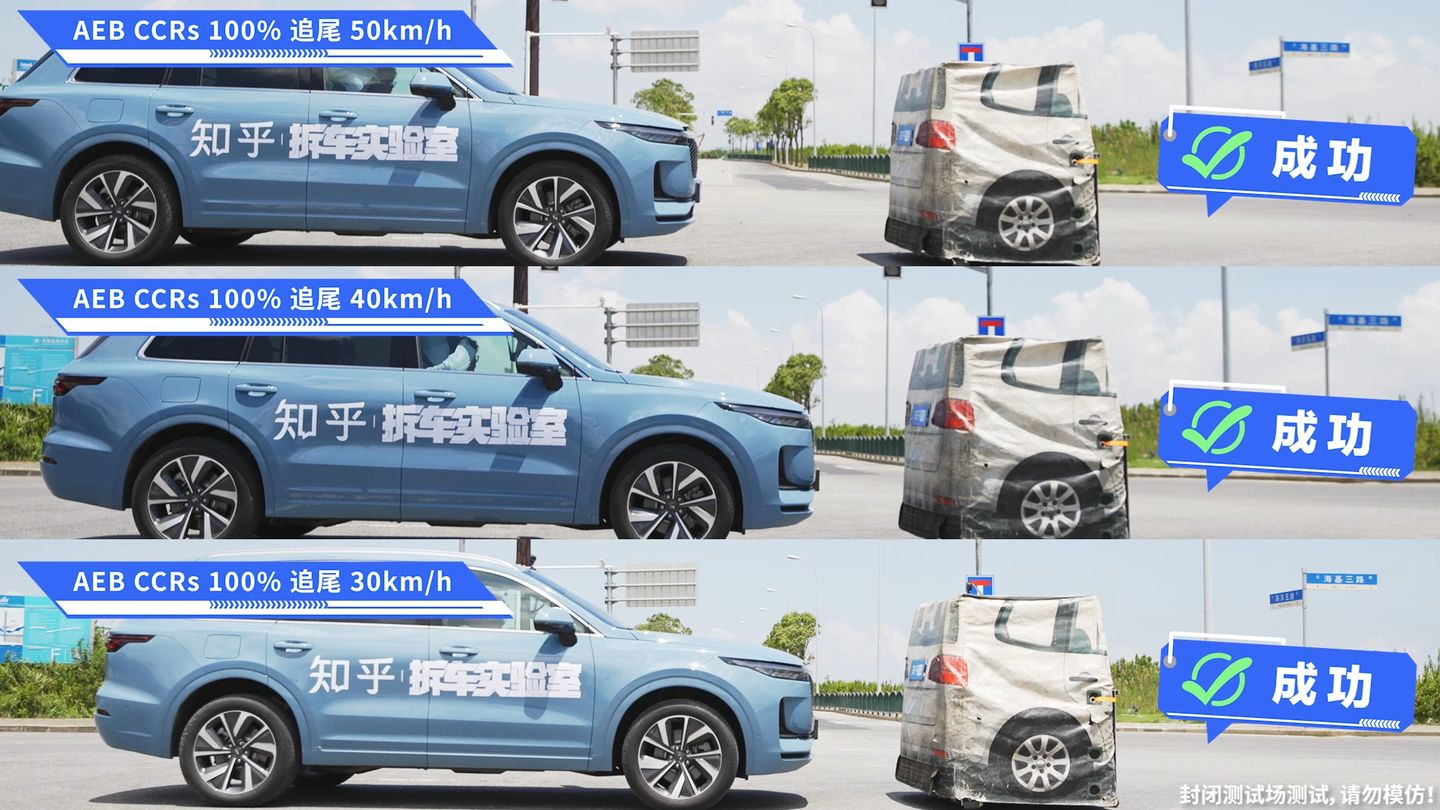
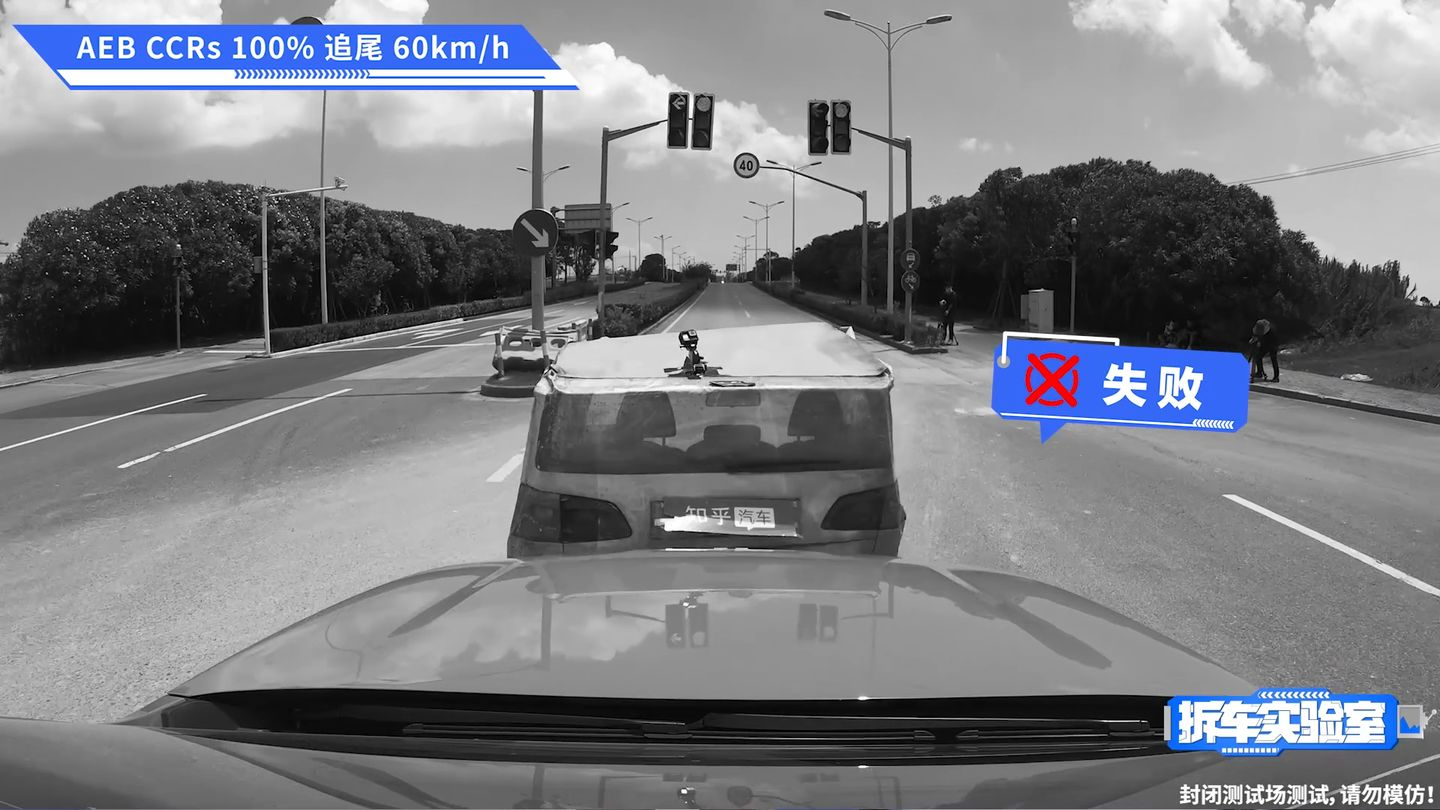 We tested the performance of the driving assistance system in the same scenario and found that it exceeded our expectations. At a maximum speed of 90 km/h, it can stably detect false vehicles and brake and stop in front of the preceding vehicle.
We tested the performance of the driving assistance system in the same scenario and found that it exceeded our expectations. At a maximum speed of 90 km/h, it can stably detect false vehicles and brake and stop in front of the preceding vehicle.
For the follow-up test, we added some difficulties based on the original test.
Firstly, in the tunnel scenario, we tested its performance at 30 km/h, and found that it was recognized before entering the shadow within 20 meters, but the braking action only lasted for a short while and it did not completely stop, with an alarm during the braking process. AEB failed in the tunnel scenario.
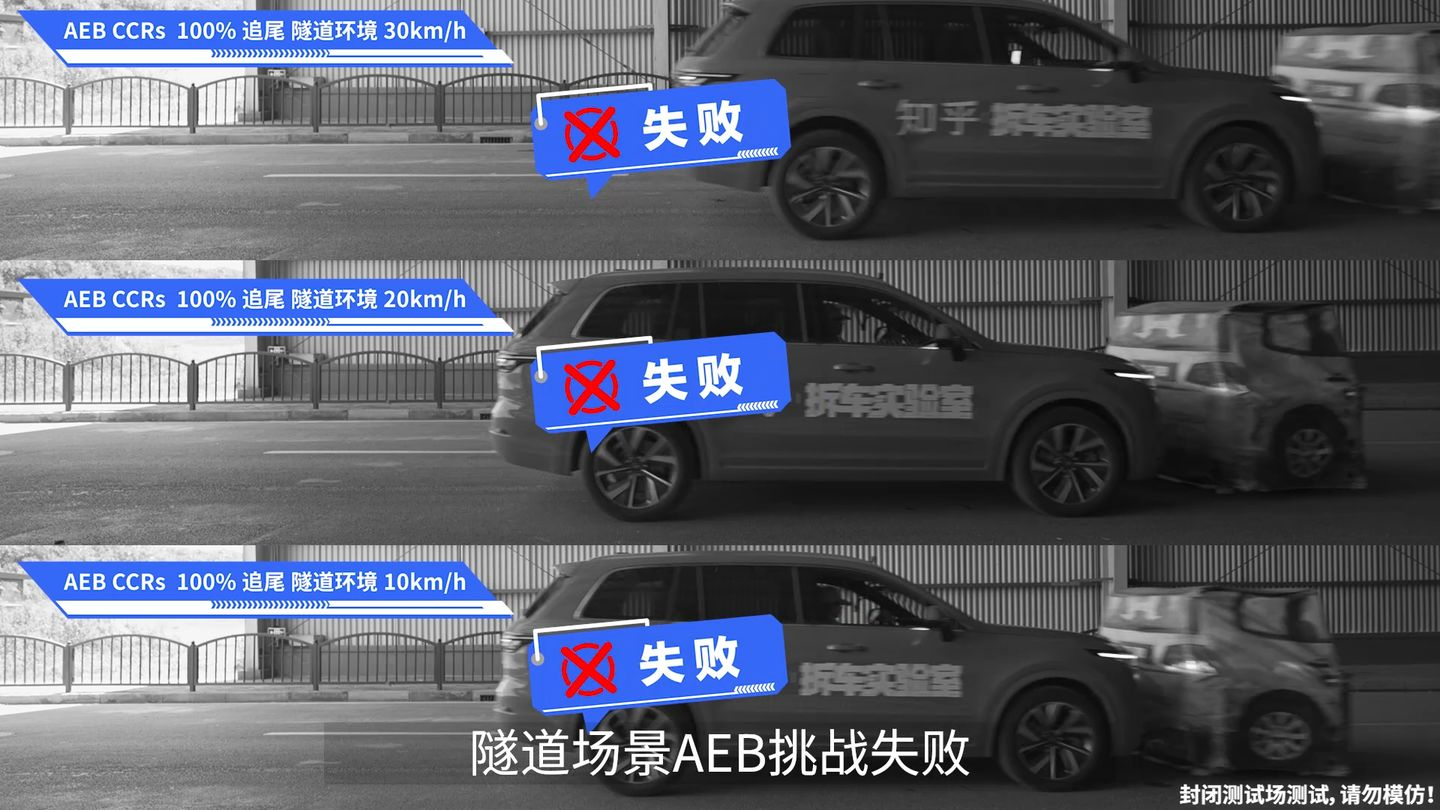
After that, we simulated rainy and foggy weather. In the AEB tests of both normal rainy and foggy environments and heavy rain environments, Idean ONE could steadily recognize preceding vehicles, but there was no braking action in the tests at 10-30 km/h. AEB failed in the rainy and foggy scenarios. Compared with the performance of Model Y tested by the teardown laboratory several months ago, which could steadily stop at 60 km/h in rainy and foggy weather, we have to admire Tesla’s excellence.
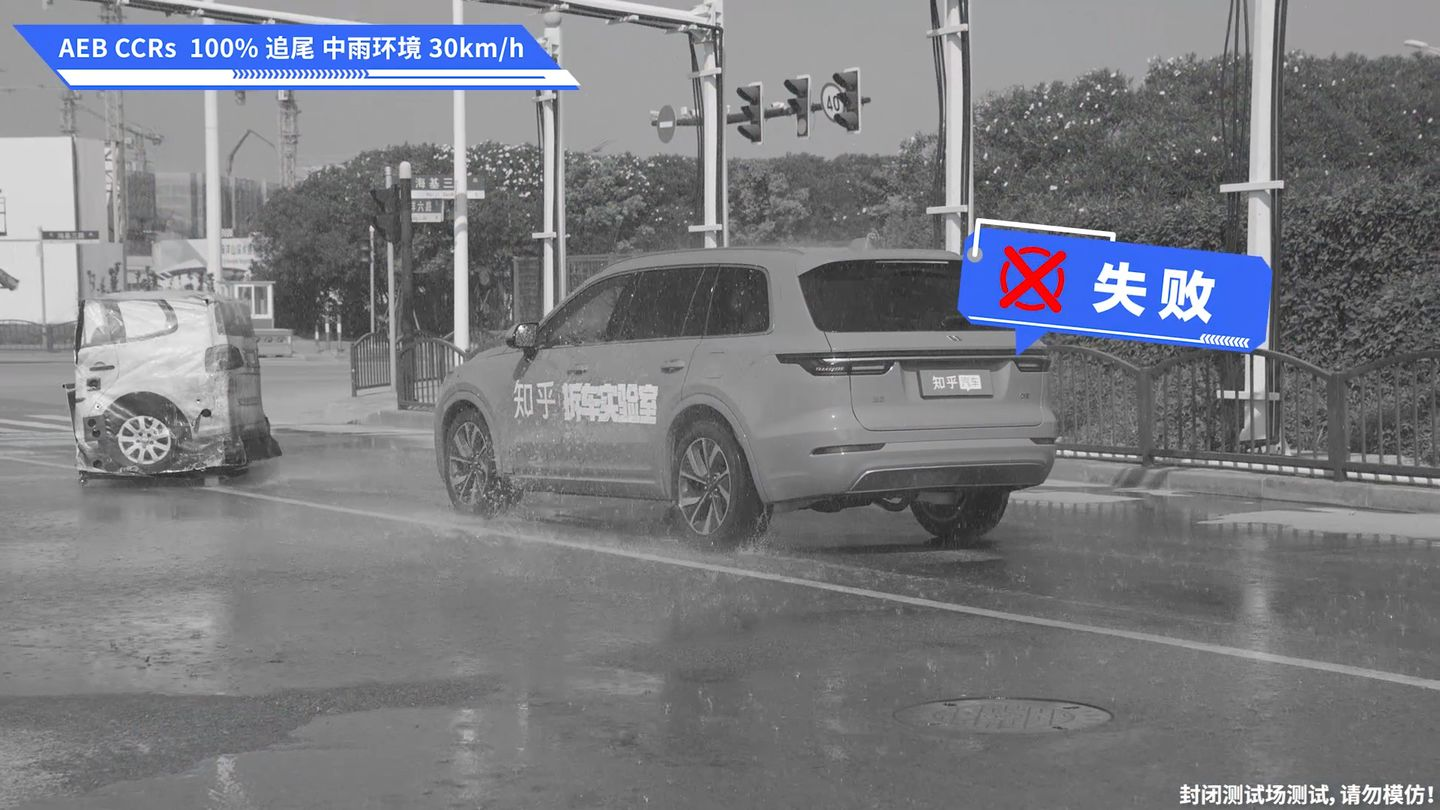
We also tested the performance of the driving assistance system in rainy and foggy weather and found that it could slowly brake at 40 km/h in normal rainy and foggy environments. Although there was braking action at higher speeds, it could not completely stop the vehicle. This indicates that the detection distance of the target vehicle was still greatly affected by the rainy and foggy weather.
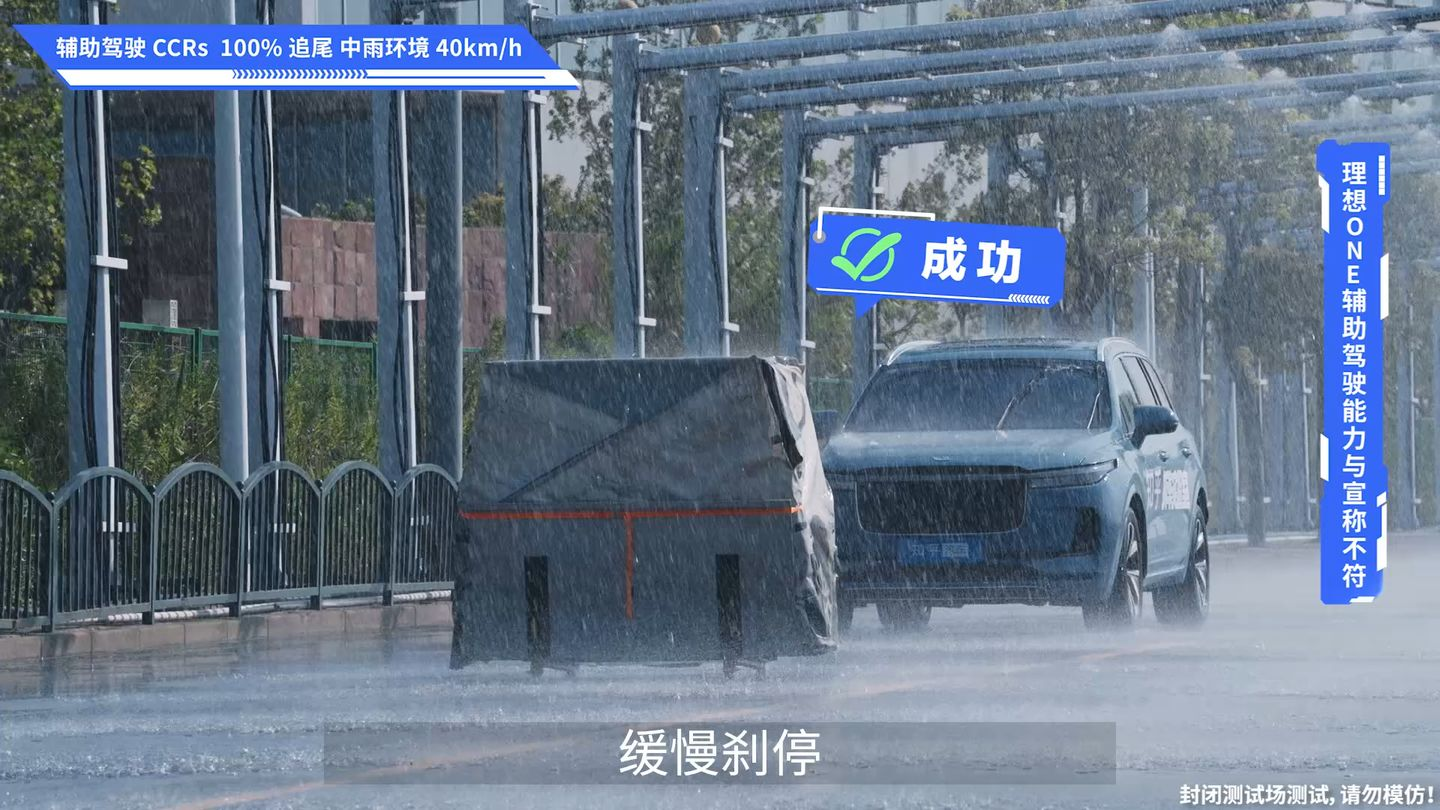
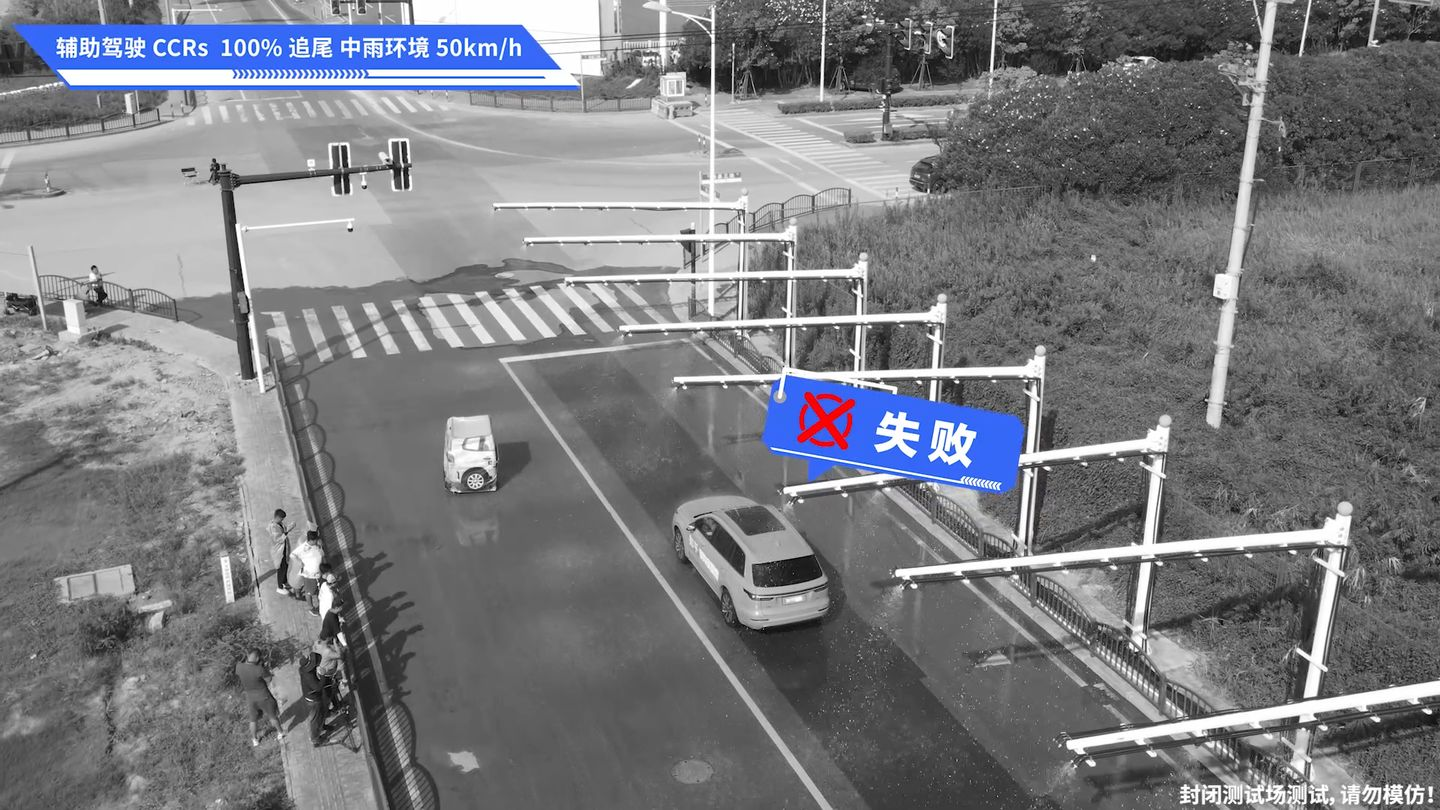
Then we directly raised the difficulty again and covered the fake vehicle with a car cover. Under this scenario, AEB could not brake and stop even at 20 km/h, indicating that Idean ONE cannot currently recognize the fake vehicle covered with a car cover. The car cover AEB challenge failed.
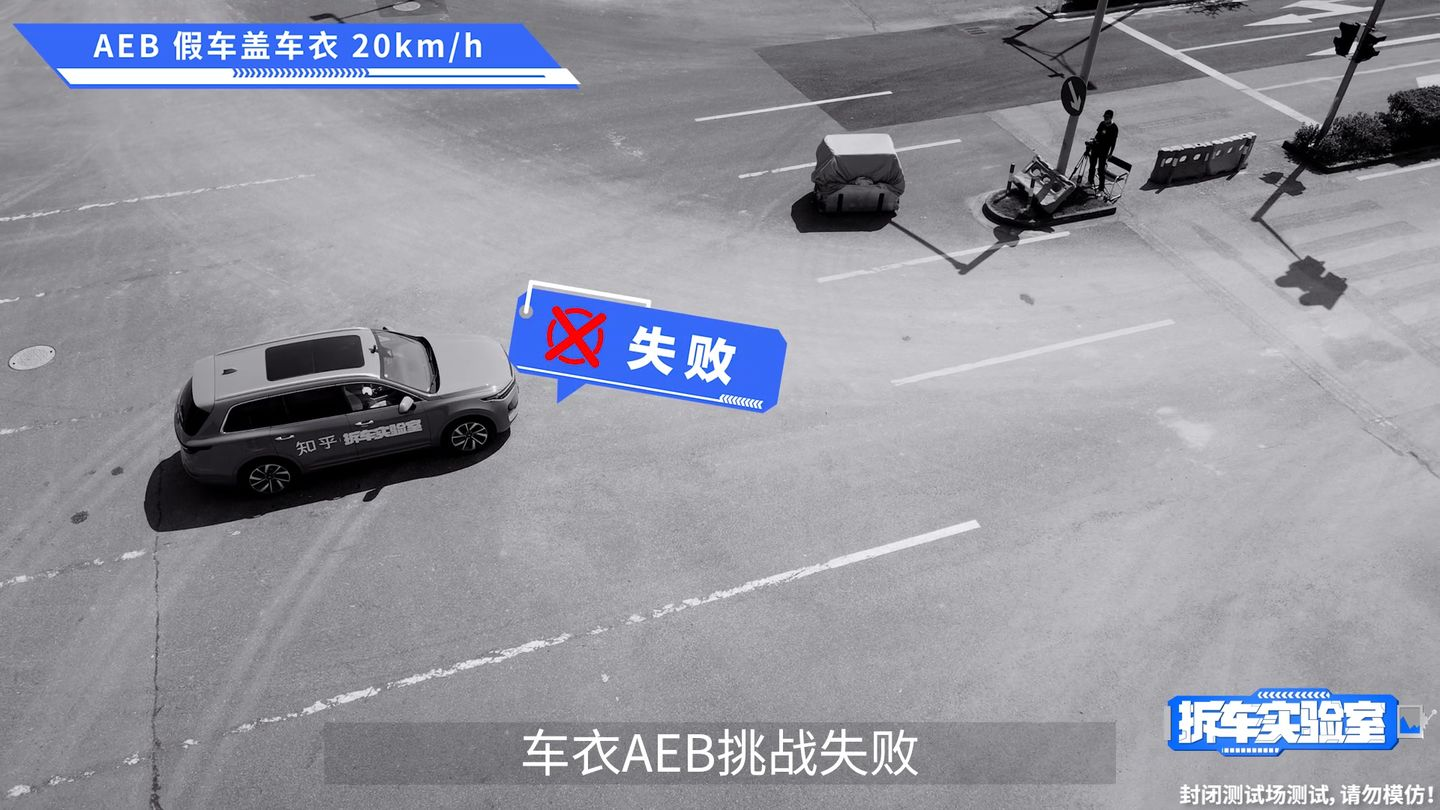 After completing the static dummy car’s 100% frontal collision test, we moved the dummy car to create a static dummy car 50% frontal collision scenario. During this test, we found that the dummy car recognition was not stable when the vehicle speed was below 20 km/h. However, when we continued the speed test and raised it to a maximum of 50 km/h, the car could stop. But at higher speeds, it could not stop.
After completing the static dummy car’s 100% frontal collision test, we moved the dummy car to create a static dummy car 50% frontal collision scenario. During this test, we found that the dummy car recognition was not stable when the vehicle speed was below 20 km/h. However, when we continued the speed test and raised it to a maximum of 50 km/h, the car could stop. But at higher speeds, it could not stop.
Conclusion of AEB test on dummy car
Through these tests, it can be observed that the AEB function of Ideality ONE performs much better against dummy cars than against dummy humans. However, it still does not reach the full claimed range of 8-80 km/h.
General obstacle test
After testing the dummy cars and dummy humans, we prepared many common objects in life, such as bicycles, tricycles, water horses, cones, and trash cans. When these objects were placed in front of Ideality ONE, nothing was displayed on the central control screen, which means that these objects were not visible to the naked eye, and the AEB and driving assistance systems were unlikely to respond to them. This is consistent with my assumption that these scenes were a failure.
The individual scenes of bicycles and tricycles did not produce any response. We tested the scene of a real person riding a bike and found that the driving assistance system could detect the person riding the bike. However, when the person stops and leaves the bike, the vehicle will immediately accelerate, which once again shows that the current driving assistance system can only recognize people and cannot recognize individual bicycles or tricycles. If a person disappears from view, isolated bicycles and tricycles cannot be recognized.
Finally, we did an Easter egg, which was the white wall test. This is a scenario that Tesla Model Y cannot handle. So what will be the reaction of Ideality ONE 2021 in the face of a white wall?We found that the Ideal ONE unexpectedly stopped in the white wall scenario, whether it was AEB or assisted driving, even in the test at a maximum speed of 50 km/h. On the central control screen, the white wall was recognized as a truck. However, when we changed the white wall to a cardboard wall, AEB and assisted driving had no response and crashed directly. This indicates that Horizon has performed special optimization for the white wall scenario that Tesla cannot handle.
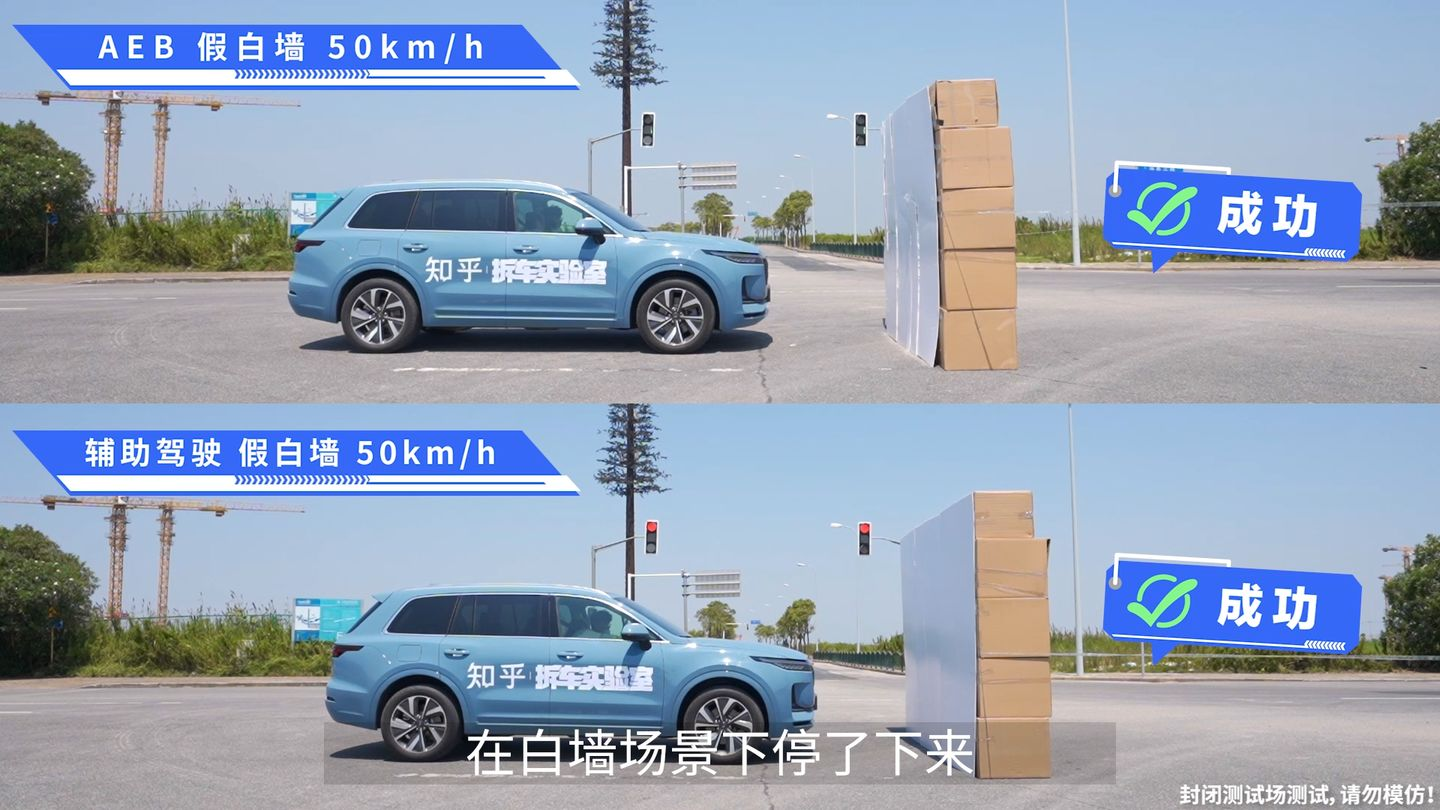
Finally, we added a photo of a person on the white wall and found that AEB did not brake in a white wall scenario with a photo of a person, but crashed directly, while in assisted driving mode it could steadily identify a person and stop at a maximum speed of 70 km/h, which is consistent with our test results with the dummy.
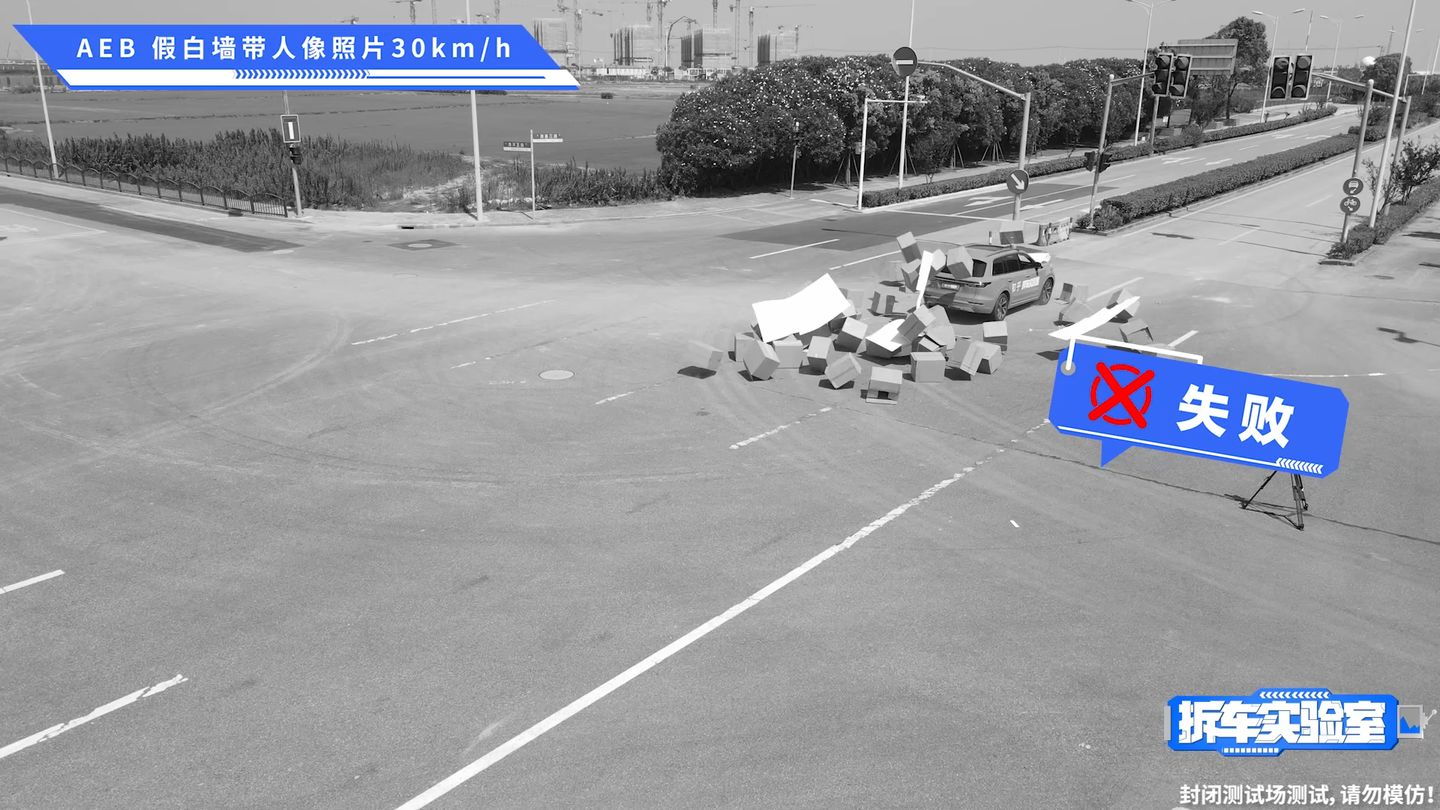
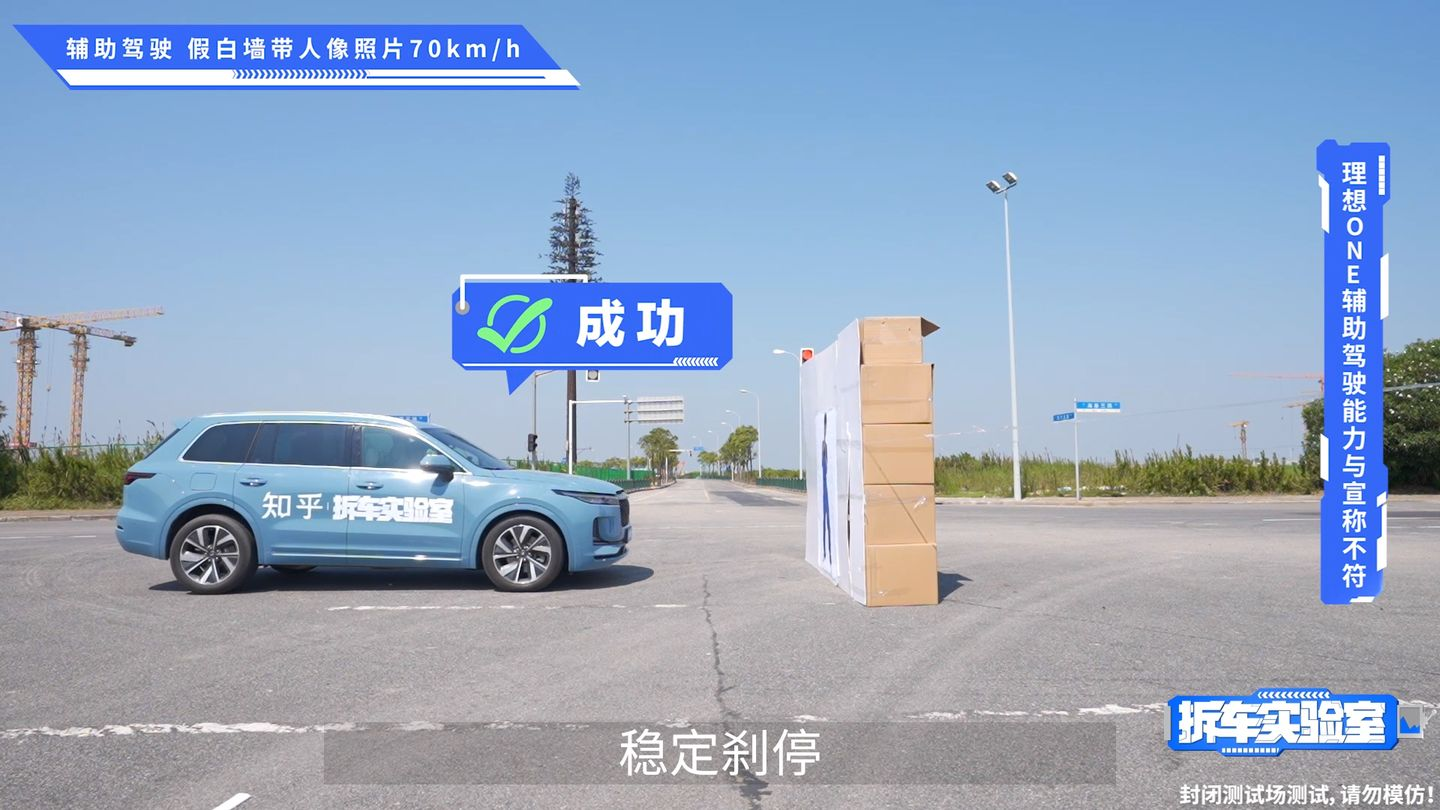
Conclusion on Common Obstacles
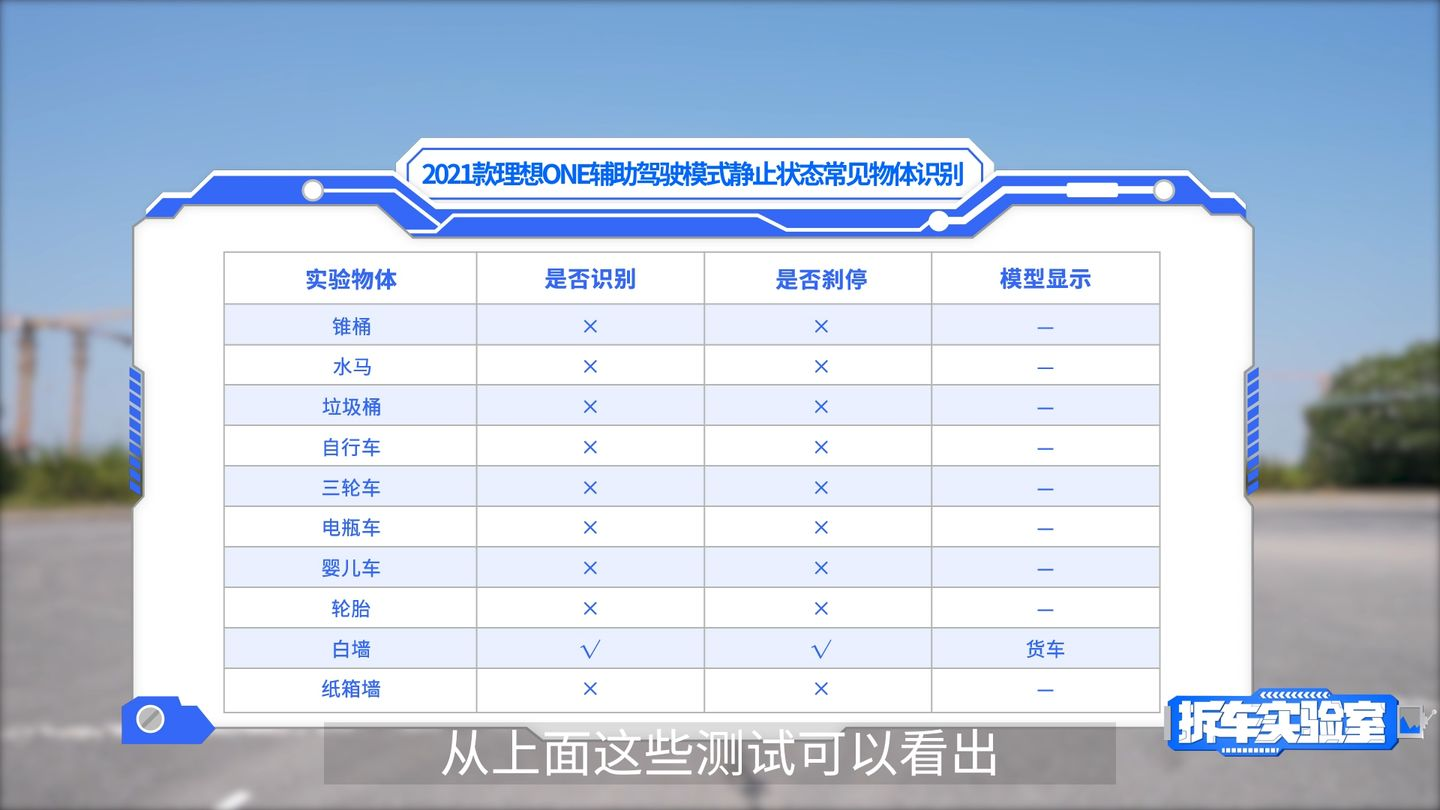
From the above tests, it can be seen that, except for the white wall scenario, the Ideal ONE’s recognition and processing ability for common objects is still limited, and it is not certain whether this is due to the fact that the Chinese-made Horizon cannot detect these objects or that Ideal has not handled them well yet. The processing ability for these common objects may still need to be developed through subsequent OTA upgrades.
Conclusion
Well, the above is our assessment of the Ideal ONE’s AEB and assisted driving features.
Overall, the 2021 model of Ideal ONE has greatly improved in sensors and computing platforms, but due to the change of a “domestically made eye” and the addition of a few “ears”, it has not fully adapted, resulting in overall performance inferior to the previous generation of vehicles. However, I still have great faith in the Ideal ONE’s autonomous driving team, and these visible bugs should be resolved quickly through OTA upgrades.
This article is a translation by ChatGPT of a Chinese report from 42HOW. If you have any questions about it, please email bd@42how.com.
